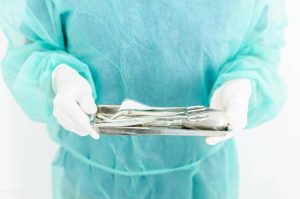When it comes to instrument sterilization in healthcare settings, ensuring the safety of patients and preventing infections is of utmost importance. Effective sterilization requires a meticulous process, and there are three key steps that stand out as critical in this regard.
Cleaning: The Foundation of Sterilization
Cleaning is the fundamental step that should precede all disinfection and sterilization processes. It involves the meticulous removal of debris, whether organic or inorganic, from an instrument or medical device. Failure to remove visible debris can significantly hinder microbial inactivation and compromise the subsequent disinfection or sterilization process.
Cleaning serves several vital purposes:
Bioburden Reduction: It reduces the bioburden on the instrument's surface, which refers to the number of microorganisms present.
Removal of Organic Residue: Cleaning eliminates organic residues such as blood, tissue, or bodily fluids, which can act as barriers to sterilization agents.
Enhanced Sterilization Efficacy: A thoroughly cleaned instrument ensures that the sterilization process can work effectively, as there are no obstacles in the way.
It's important to note that surgical instruments often need to be presoaked or prerinsed to prevent the drying of blood and tissue, making subsequent cleaning more challenging. Prompt cleaning and decontamination of items right after use are critical to achieving the desired level of cleanliness.
Several mechanical cleaning machines, such as ultrasonic cleaners and washer-sterilizers, can aid in the cleaning and decontamination of most items. Automation can improve cleaning effectiveness, increase productivity, and reduce worker exposure to potentially infectious materials.
Sterilization Cycle Verification: Ensuring Sterility
Before putting a sterilization process into use in healthcare settings, it is crucial to verify its effectiveness. Verification involves testing the sterilization equipment with biological and chemical indicators. This verification process is essential for steam, ethylene oxide (ETO), and other low-temperature sterilizers.

The verification process includes:
Running three consecutive empty steam cycles, each with a biological and chemical indicator in an appropriate test package or tray.
For prevacuum steam sterilizers, additional Bowie-Dick tests are performed.
The sterilizer should not be put back into use until all biological indicators show negative results, and chemical indicators demonstrate a correct end-point response. This verification process is not only done during installation but also when there are major changes in packaging, wraps, or load configuration.
Biological and chemical indicators are also used for ongoing quality assurance testing of representative samples of actual products being sterilized. Items processed during the evaluation cycles should be quarantined until the test results are negative.
Physical Facilities: Creating Sterile Environments
The physical environment plays a critical role in ensuring the effectiveness of instrument sterilization. Ideally, the central processing area should be divided into at least three sections: decontamination, packaging, and sterilization and storage. Physical barriers should separate the decontamination area from the other sections to contain contamination on used items.
Key considerations for the physical facilities include:
Airflow Control: The recommended airflow pattern should contain contaminants within the decontamination area and minimize their flow to the clean areas. Proper ventilation is essential to maintain air quality.
Sterile Storage: The sterile storage area should have controlled temperature and relative humidity to preserve the sterility of processed items.
Material Selection: Floors, walls, ceilings, and surfaces should be constructed of materials capable of withstanding chemical agents used for cleaning or disinfecting. Non-shedding materials are crucial for maintaining cleanliness.
Creating the right physical environment ensures that the sterility of instruments is maintained from decontamination to storage.
Conclusion
Instrument sterilization is a meticulous process that involves several crucial steps. Cleaning, sterilization cycle verification, and maintaining the appropriate physical facilities are fundamental to ensuring patient safety, preventing infections, and preserving the value of medical instruments. Healthcare facilities must uphold the highest standards of hygiene and consistency in instrument sterilization practices to protect both patients and staff.